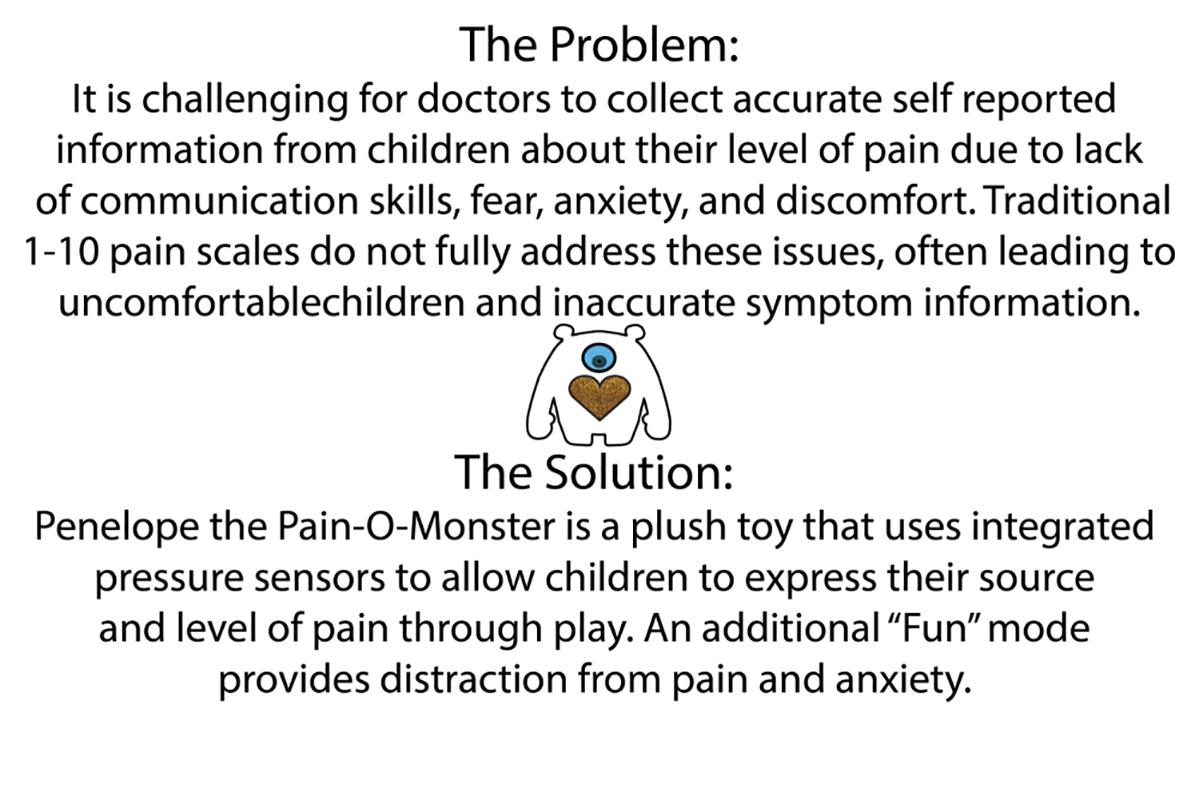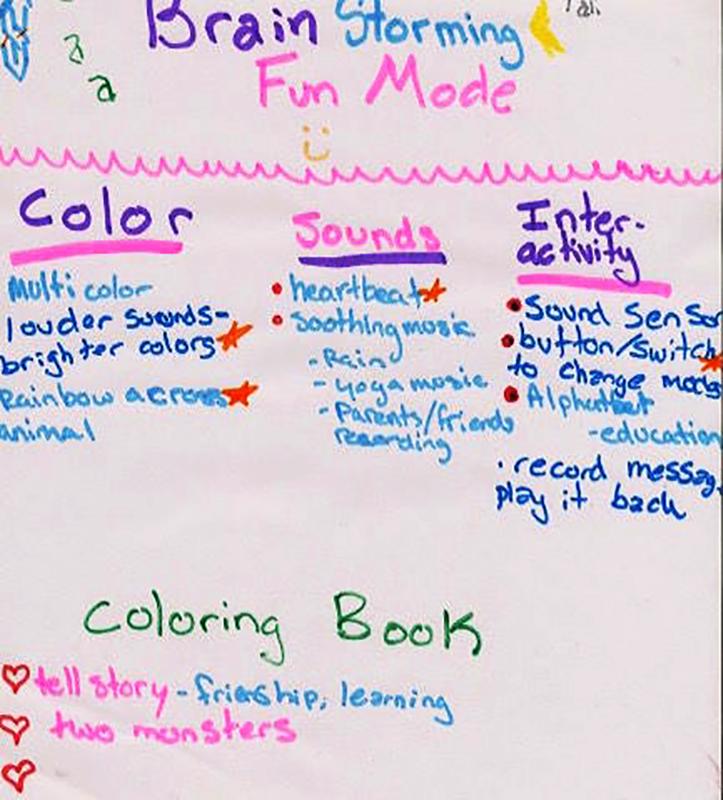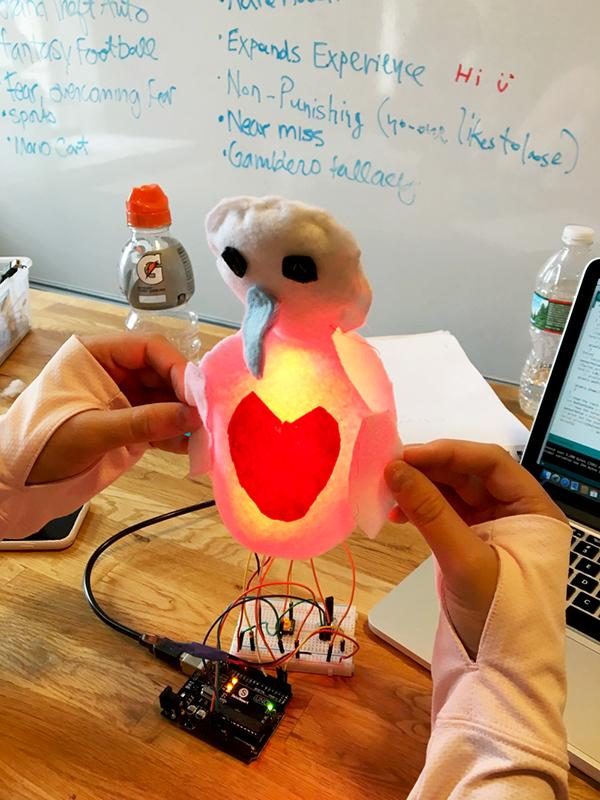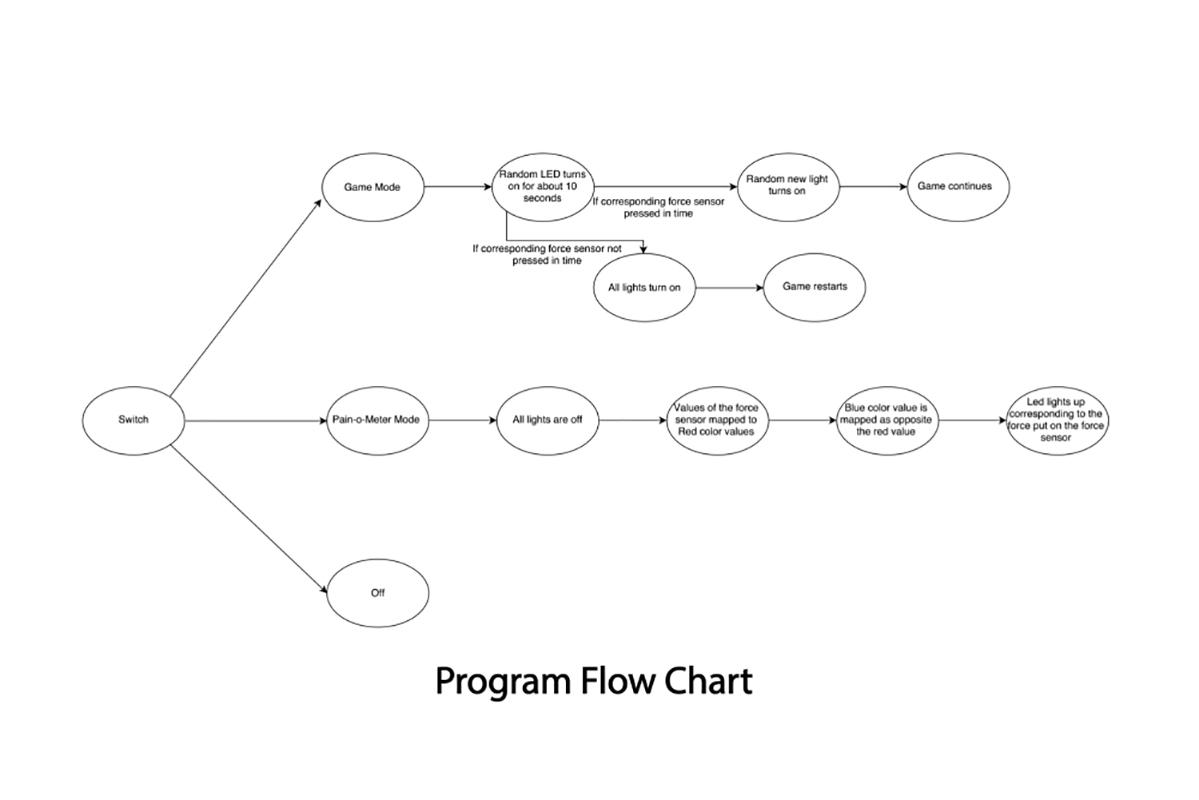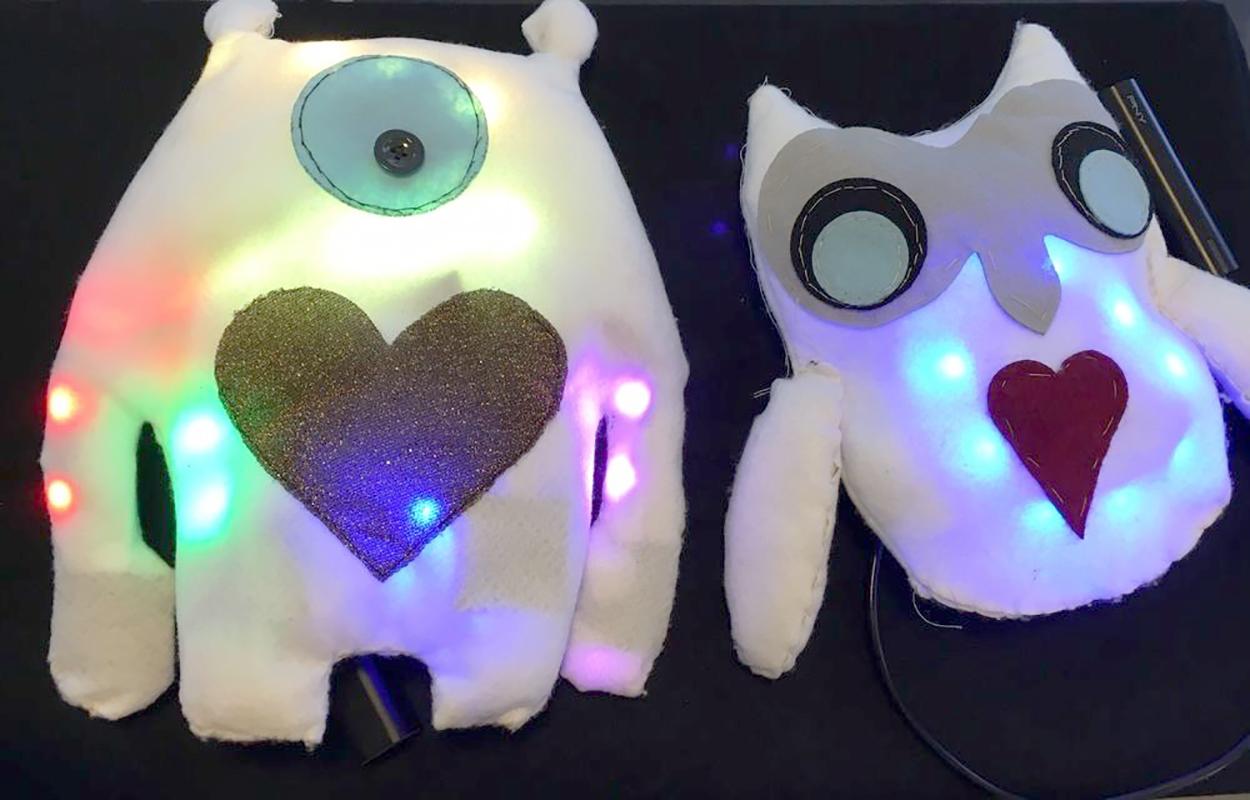Penelope The Pain-O-Monster
School: NuVu: The Innovation School
City/State: Cambridge, MA
Grade(s): 7, 8, 9, 10, 11, 12
Format(s): Device
Subject(s): Health and Wellness, Science and Technology
Project Overview
Students grappled with the challenge doctors face in collecting accurate self-reported information from children about their level of pain due to lack of communication skills, fear, anxiety, and discomfort. They found that traditional 1-10 pain scales do not fully address these issues, often leading to uncomfortable children and inaccurate symptom information. Their solution was Penelope the Pain-O-Monster, a plush toy that uses integrated pressure sensors to allow children to express their source and level of pain through play. Students equipped Penelope with an additional “Fun” mode to provide a distraction from pain and anxiety.
There is a switch that turns the stuffed animal off, puts it on the pain-o-meter mode or the game mode. It is connected to an exterior power to be able to power six LED light strips and six force sensors. Everything is connected to an arduino and lights and force sensors are matched up to different body parts. The child would press where it hurts with as much pressure as it hurts and the light in that body part will turn on. The color goes from blue, not that much pain to red, the most pain. The game mode has a random strip light up and the child has to press the corresponding force sensor in that body part as fast as they can before they restart.
During development, students started out by having many ideas about what they would put in the different modes, like a heartbeat and rainbow colors. Students thought about sound and smell but those were all very ambitious. They liked the game where different colors light up in a pattern and you have to press the force sensors in the same pattern, each round the pattern got more complicated. This was hard to generate randomly because there was no simple way to repeat the past exact two colors again in the same place and then add another random color. Students decided it was still fun to have a limited amount of time to press the force sensor corresponding to the light that lit up; there was no pattern in this game but there is a random aspect because the lights lite up in a random order after a child presses the right force sensor. In the pain-o-meter mode, students knew that we were going to have the color go from blue to red depending on the amount of pain. They decided to make a stuffed animal that looked like an alien with a heart pocket. There were two iterations of our ‘alien’ and they ended up choosing one that looked more like a monster.
Students faced various programming challenges. First they had to find a way to connect the arduino board to an external power source, they used a portable charger and cut an USB cable to connect the wires to. It took them a while to set up the three position switch and have all the power connected to the board so that the LED lights were controlled by the switch and not the portable charger directly. Students also had trouble connecting the two modes and getting them to work correctly and they learned a lot about coding. Although they couldn’t quite get the game as sophisticated as they first envisioned they successfully made a game that is still usable and fun.
At NuVu, an innovation school in Cambridge, MA, middle and high school students learn in an open and flexible space that is more akin to an architecture studio than a classroom. Some students attend NuVu for a two-week intensive and for others it is their full-time high school.
Instead of one-hour classes and separate subjects, students engage in solving a problem through multi-disciplinary learning, all day, for two weeks. Groups of twelve students collaborate on the creative process, with expert guidance from two coaches who have expertise in a related field. Throughout the process, students conduct precedent research, engage in brainstorming, render drafts of their ideas, create prototypes and write and reflect on their findings and processes. Their work is captured in a portfolio along with documentation of the final products they debut at the end of each studio session. These portfolios are publically viewable on NuVu’s website.
How This Project Can Be Useful
- A wonderful model of empowering students to make a difference through STEM
- Exemplary model of students designing in response to a specific challenge, using critique and descriptive feedback to refine a product to a level of high quality
- Beautiful example of iteration in the design process as evidenced by thorough documentation
- Excellent reflective summaries in student voice that capture the transformative power of this process

